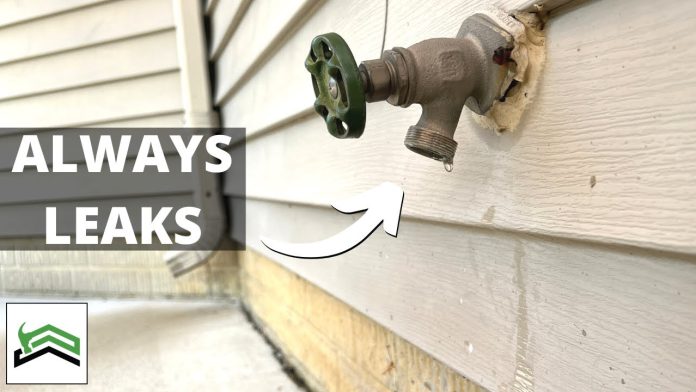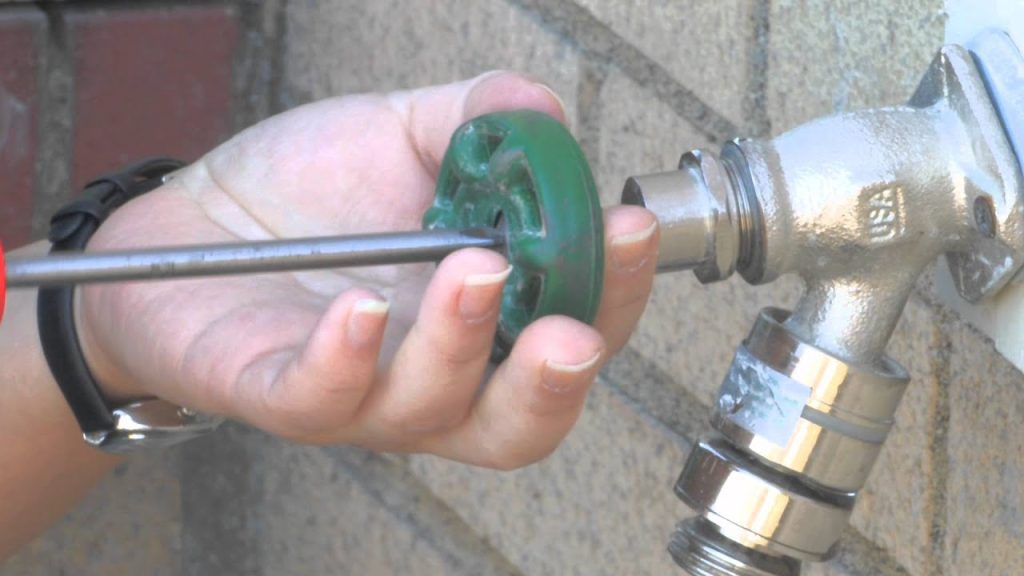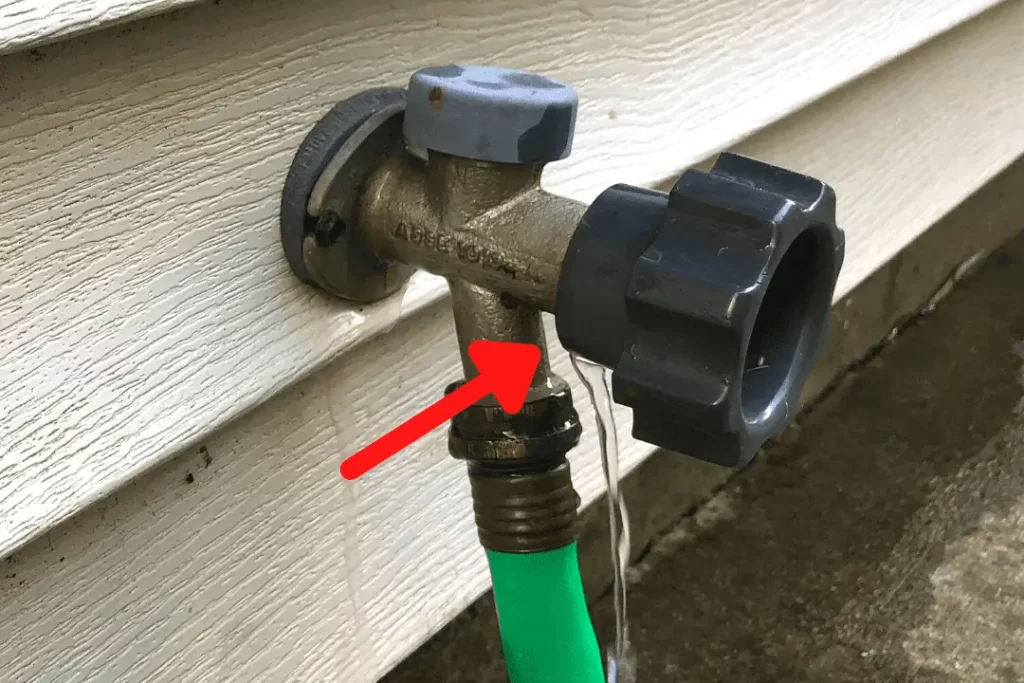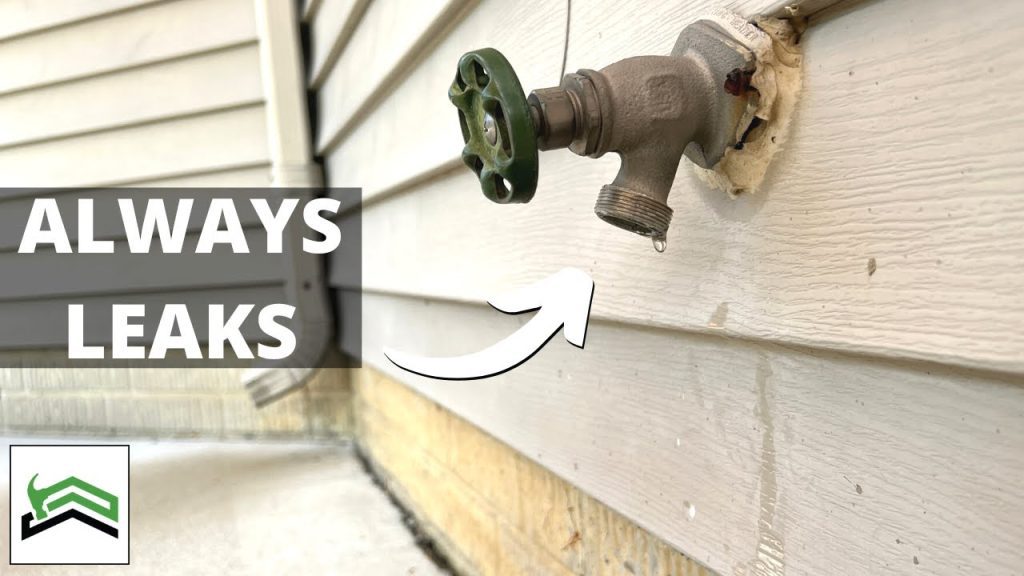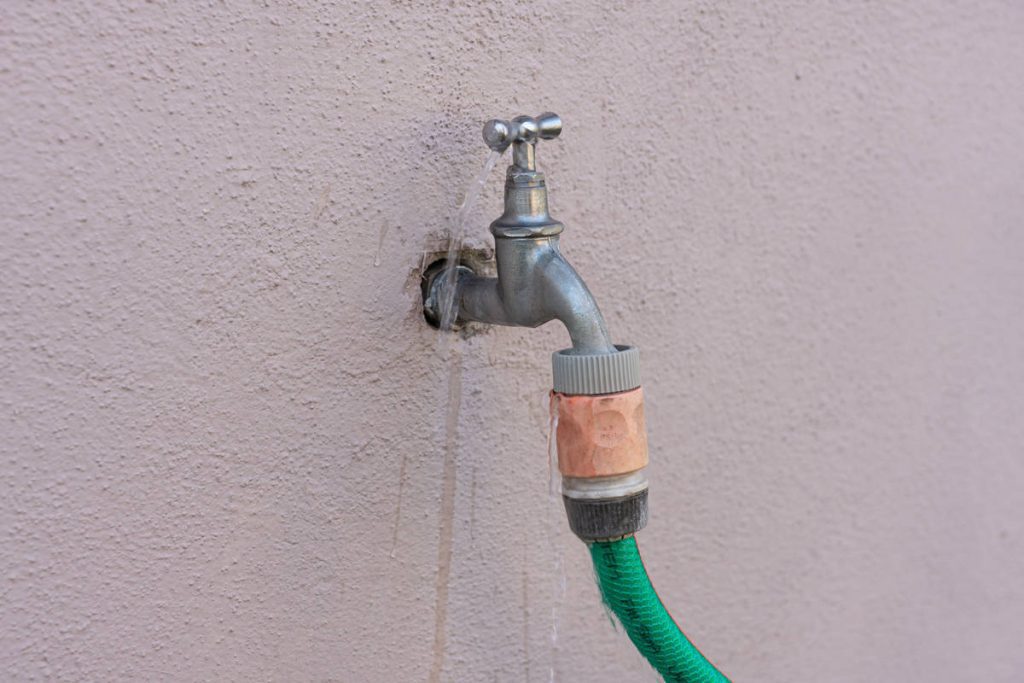Are you tired of dealing with a constantly dripping hose faucet? It can be not only frustrating but a waste of water as well. In this article, we will provide you with simple and effective tips on how to put an end to this annoying leak. By following these easy steps, you’ll have your hose faucet working perfectly and without any leaks in no time. Say goodbye to wasted water and hello to a leak-free garden!
Table of Contents
Identify the Cause of the Leak
Inspect the Hose
The first step in stopping a hose faucet from leaking is to inspect the hose itself. Look for any visible signs of damage, such as holes or cracks. If you notice any, it is likely that the hose is the cause of the leak. In this case, you will need to repair or replace the hose.
Check the Faucet Handle
Another common cause of a leaking hose faucet is a faulty faucet handle. Over time, the handle can become loose or worn out, causing water to seep out. To check if the handle is the issue, turn the faucet on and off while observing for any water leaking around the handle. If you notice any leakage, you will need to repair or replace the handle.
Examine the Washer
The washer inside the hose faucet can also be a culprit of leaks. This small rubber or plastic component can wear out or become damaged over time, leading to water leakage. To inspect the washer, turn off the water supply to the hose faucet and dismantle the faucet. Check the washer for any signs of wear or tear, and if necessary, replace it with a new one.
Look for Cracks or Damage
Lastly, it is important to inspect the entire hose faucet for any cracks or other damage. A damaged faucet can cause leaks, resulting in water wastage and potential water damage to your property. Carefully examine the faucet body and all its components for any visible signs of cracks or other forms of damage. If you find any, it is crucial to repair or replace the damaged parts.
Repairing the Hose Faucet
Tighten the Connections
If you have identified that the leak is caused by loose connections, the first course of action is to tighten them. Use an adjustable wrench or pliers to securely tighten all the connections, including the one between the faucet and the hose. Ensure that the connections are snug but be cautious not to overtighten and cause damage.
Replace the Washer
As mentioned earlier, a worn-out or damaged washer can contribute to a leaking hose faucet. To remedy this issue, replace the faulty washer with a new one. Start by turning off the water supply to the faucet, then disassemble the faucet to access the washer. Remove the old washer and replace it with a suitable replacement, ensuring a proper fit. Reassemble the faucet and turn on the water supply to test for leaks.
Fix Cracks or Damage
In case you discovered any cracks or damage during your inspection, it is essential to address them promptly. Repairing cracks in a hose faucet is often best left to professionals, as it may require specialized tools and expertise. However, for minor damage, you can try using a waterproof sealant or epoxy to fill the cracks and reinforce the faucet. Be sure to follow the manufacturer’s instructions when applying any sealant or epoxy.
Use Plumbing Tape
To prevent leaks at the threaded connections of the faucet, consider using plumbing tape. Also known as Teflon tape, it creates a watertight seal and helps to prevent leaks. Before reconnecting the hose or any other component, wrap a few layers of plumbing tape around the threaded end of the faucet. This simple step can make a significant difference in preventing future leaks.
Apply Silicone Caulk
Similarly, applying silicone caulk around the base of the hose faucet can provide an additional layer of protection against leaks. After detaching the hose, clean the area around the base of the faucet to ensure proper adhesion. Apply a thin bead of silicone caulk around the base, making sure to cover any gaps or cracks. Smooth the caulk with a caulk smoothing tool or your finger for a neat and even finish. Allow the caulk to dry completely before reattaching the hose.
Preventive Measures
Regular Maintenance
One of the best ways to prevent hose faucet leaks is through regular maintenance. Inspect your faucet and hose regularly for any signs of wear, damage, or leaks. Clean the faucet and remove any debris that may accumulate over time. In addition, lubricate any moving parts to ensure smooth operation. By conducting regular maintenance, you can catch any issues early on and address them promptly, avoiding potential leaks.
Winterize the Faucet
During the colder months, it is crucial to winterize your hose faucet to prevent freezing and subsequent leaks. Start by disconnecting and draining the hose to eliminate any trapped water. Next, locate the shut-off valve for the outdoor faucet and turn it off to stop the water supply. Finally, open the outdoor faucet to drain any remaining water. This simple process can help prevent frozen pipes and leaks.
Avoid Excessive Force
It is essential to remember that excessive force should never be used when operating a hose faucet. Applying too much pressure can damage the faucet or its components, leading to leaks. Be gentle when turning the faucet on or off, and avoid forcing it if it is stiff. Using a smooth and steady motion will help maintain the integrity of the faucet and minimize the risk of leaks.
Use a Hose Cap
When the hose is not in use, consider using a hose cap to cover the faucet’s opening. A hose cap provides an extra layer of protection against water leaks and helps prevent debris from entering the faucet. Simply place the cap over the faucet and ensure a snug fit. This small investment can go a long way in extending the life of your hose faucet and preventing leaks.
Install a Backflow Preventer
Installing a backflow preventer is another preventive measure that can help stop leaks and protect your water supply. A backflow preventer is a device that prevents water from flowing back into the main water supply. It can be particularly useful if your hose is connected to a chemical sprayer or other potentially harmful equipment. Consult a professional plumber to determine the best backflow preventer for your specific needs.
When to Call a Professional
Severe Damage
If you have identified severe damage, such as significant cracks or extensive wear, it is wise to call a professional plumber. They have the expertise and tools necessary to handle complex repairs or replacements. Ignoring severe damage can lead to further issues and potentially cause significant water damage to your property. Don’t hesitate to seek professional help if you encounter severe damage to your hose faucet.
Complex Plumbing System
In some cases, the cause of a leaking hose faucet may not be immediately apparent or may involve a complex plumbing system. If you are unsure about the underlying issue, or if your faucet is part of a larger plumbing system, it is best to consult a professional plumber. They will be able to assess the entire system and determine the best course of action to address the leak and prevent any future plumbing problems.
Lack of DIY Knowledge
Lastly, if you lack the necessary knowledge or experience to repair or replace a hose faucet yourself, it is advisable to call a professional. Attempting to fix the issue without the required expertise may lead to more harm than good. A professional plumber can ensure that the repair is done correctly, minimizing the risk of further leaks or damage.
Conclusion
A leaking hose faucet can be a frustrating and wasteful problem, but with proper identification and repairs, it can be resolved efficiently. By inspecting the hose, faucet handle, washer, and looking for cracks or damage, you can pinpoint the cause of the leak. Repairing the hose faucet may involve tightening connections, replacing the washer, fixing cracks or damage, using plumbing tape, or applying silicone caulk. Additionally, adopting preventive measures such as regular maintenance, winterizing the faucet, avoiding excessive force, using a hose cap, and installing a backflow preventer can help prevent leaks from occurring in the future. Remember, when in doubt, calling a professional is always a viable option, especially for severe damage or complex plumbing systems. Taking these steps will not only save you water and money but also prolong the life of your hose faucet and ensure its proper functioning for years to come.

